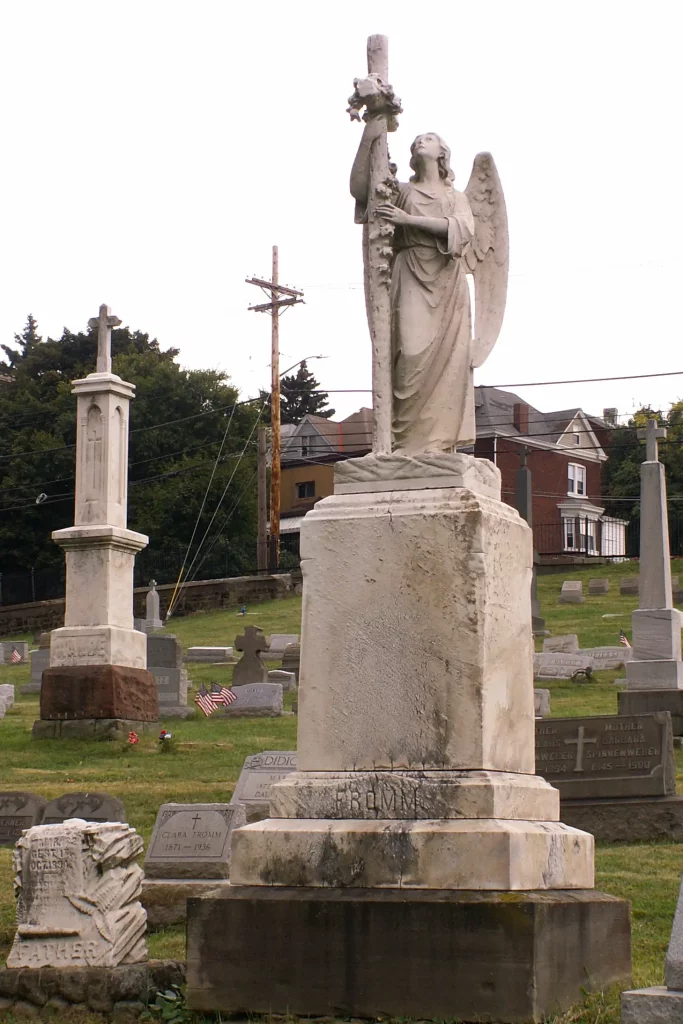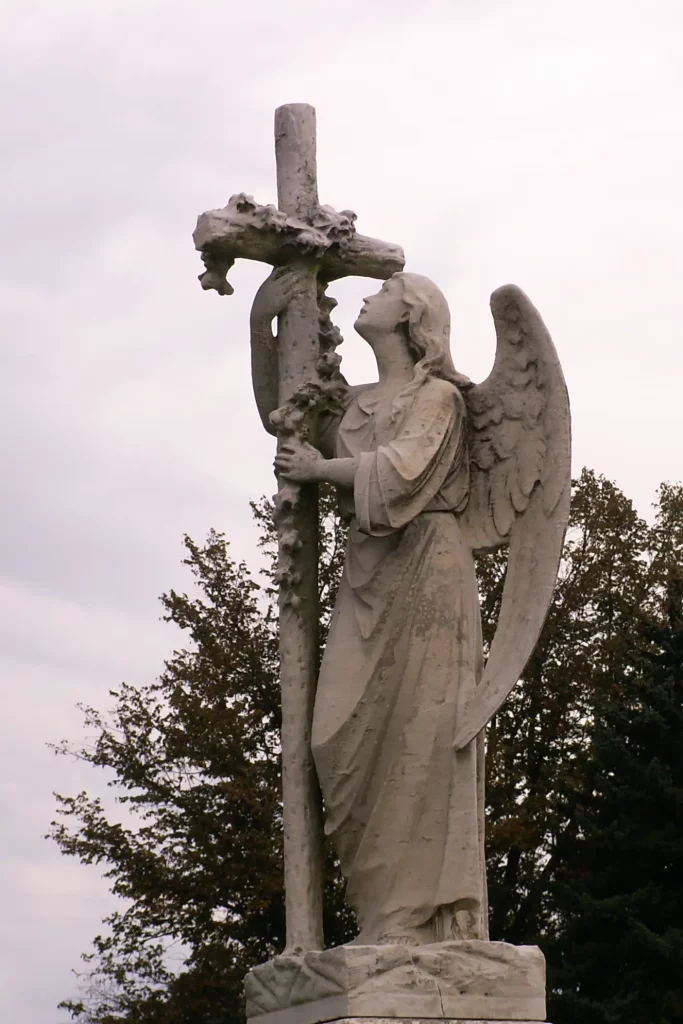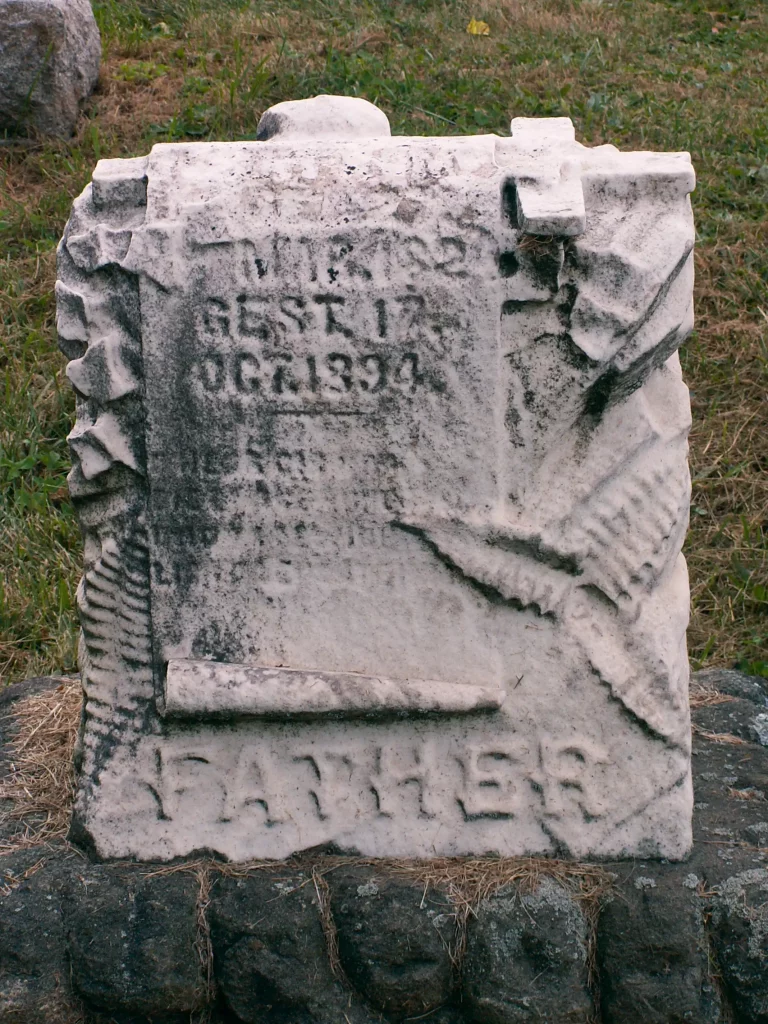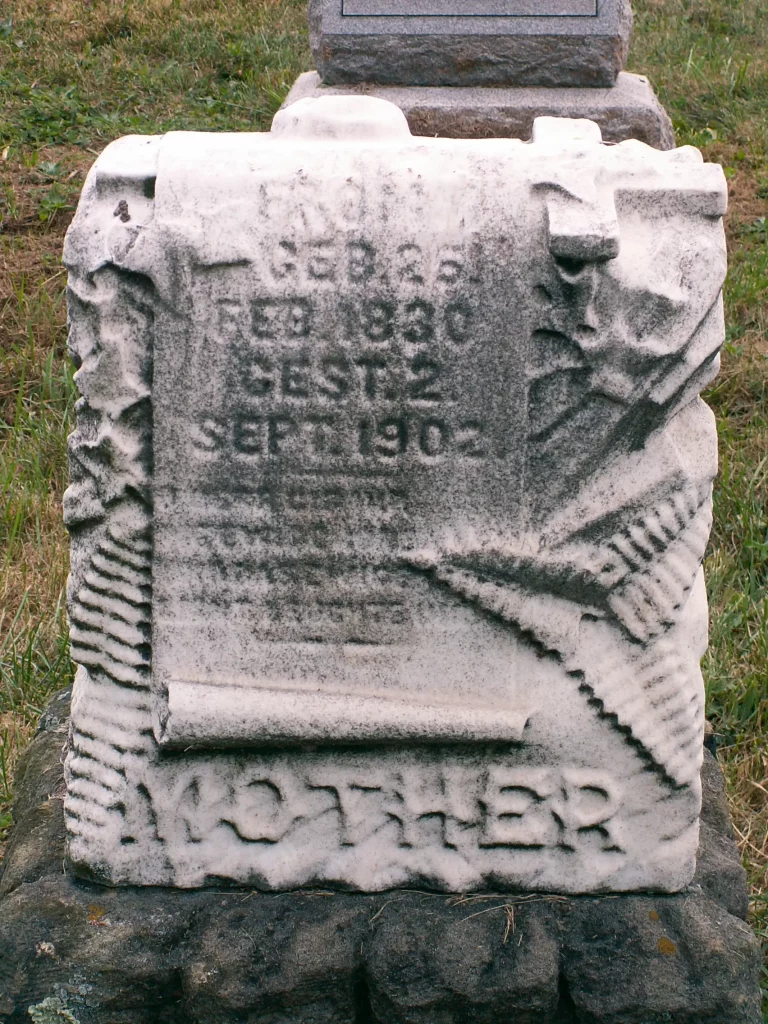Father Pitt assumes that this is a descendant or other relative of the Voegtly who donated the land for the original Voegtly Church in Dutchtown, whose name this cemetery perpetuates. The name of Mathias Voegtly is still quite visible, but the rest of the inscription is badly eroded. We can just make out the name of Elizabeth Voegtly, but the rest is difficult.
 However, the graves of the Voegtlys are also marked with expensive granite memorials, and though they are overgrown with wild grapes (you can see the mound of grape vines to the right of the obelisk), Father Pitt pushed back the grapes enough to collect these data:
However, the graves of the Voegtlys are also marked with expensive granite memorials, and though they are overgrown with wild grapes (you can see the mound of grape vines to the right of the obelisk), Father Pitt pushed back the grapes enough to collect these data:
Mathias Voegtly: Born November 26, 1811; died January 17, 1884
Elizabeth Voegtly: Born July 28, 1805; died October 2, 1890.









